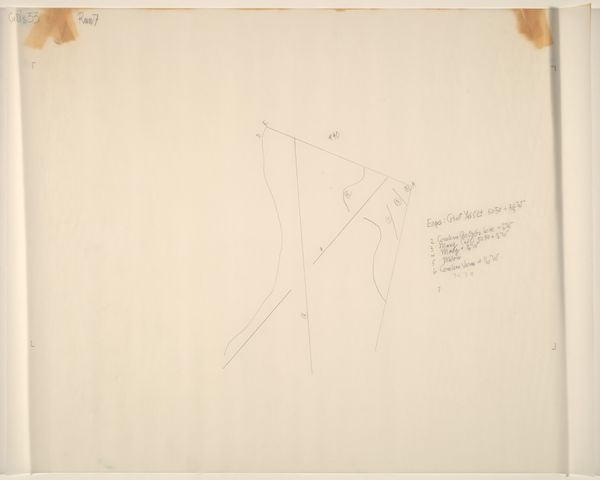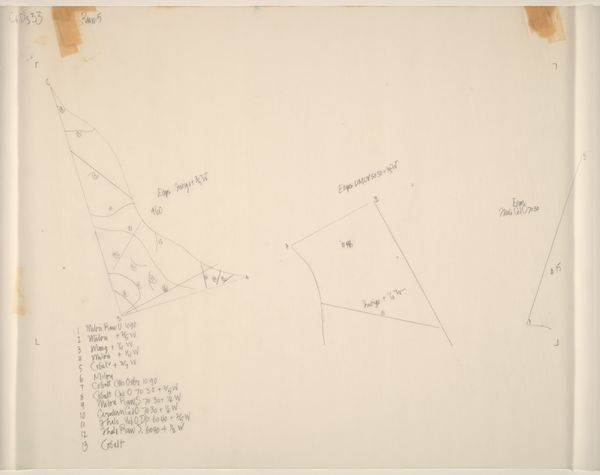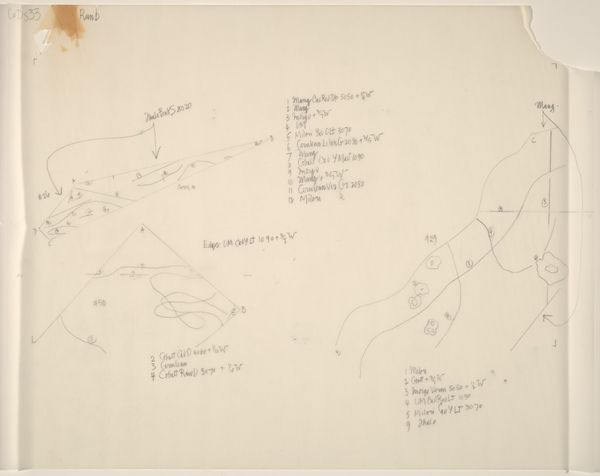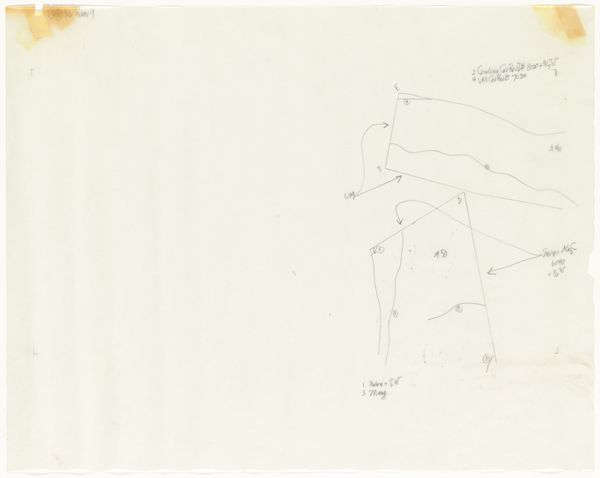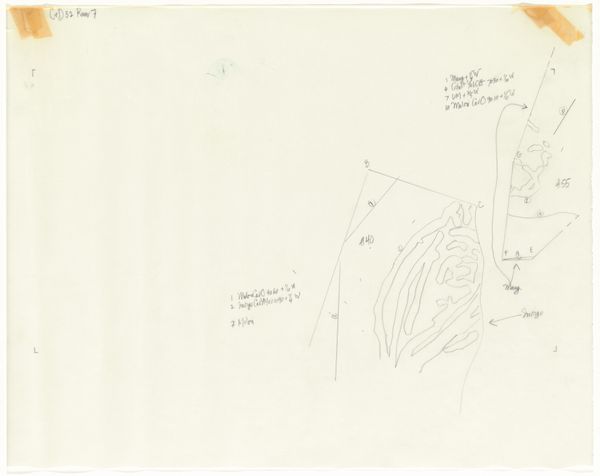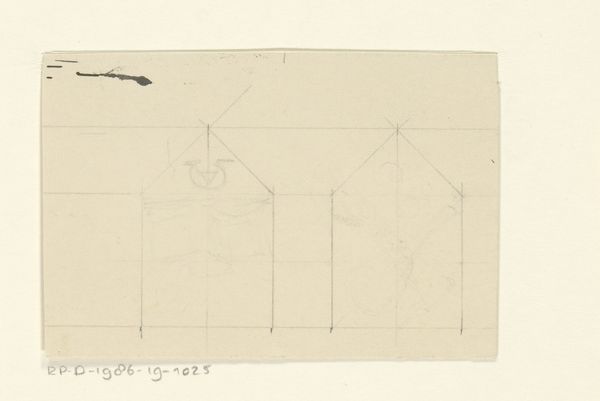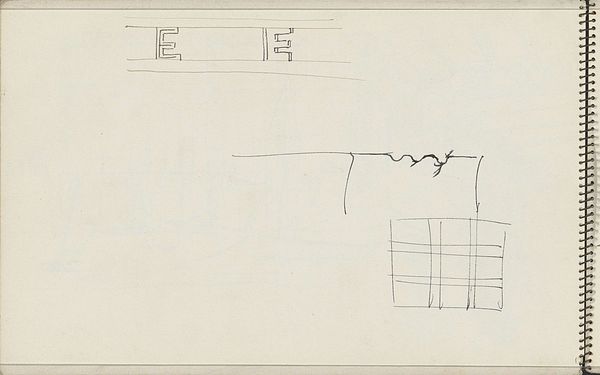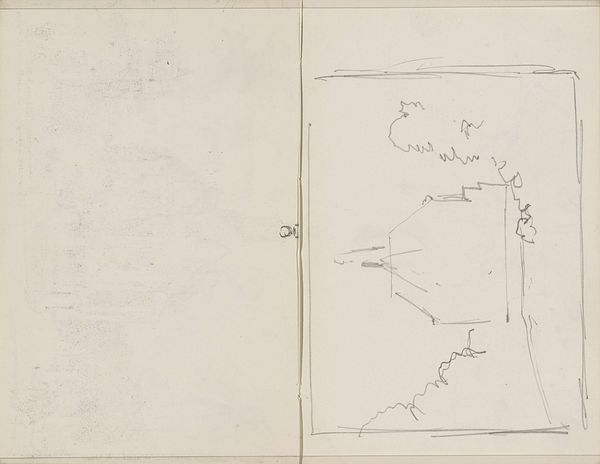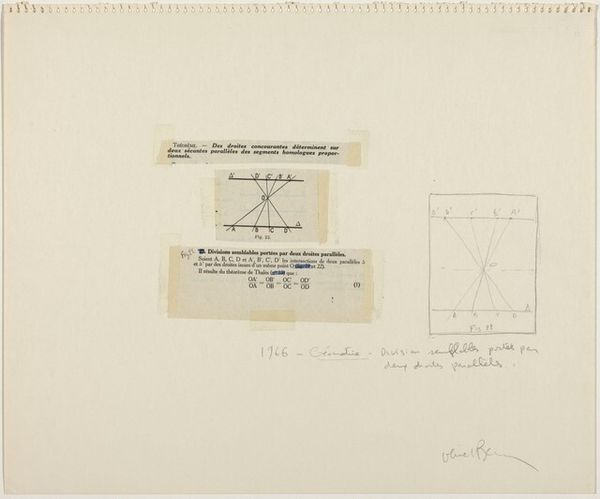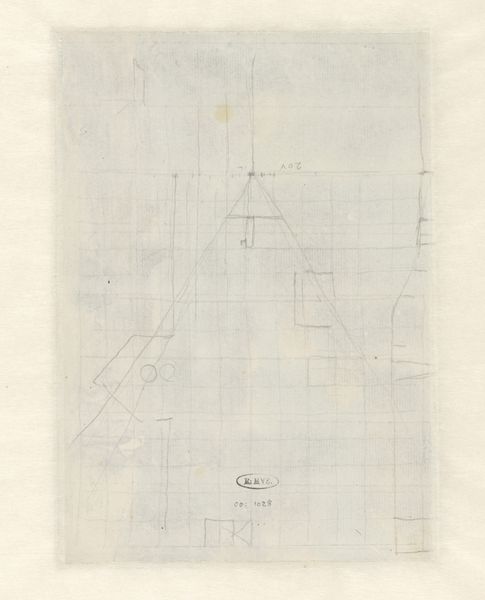
drawing, pencil
#
drawing
#
conceptual-art
#
etching
#
black-mountain-college
#
pencil
#
line
Dimensions: sheet: 48.26 x 60.96 cm (19 x 24 in.)
Copyright: National Gallery of Art: CC0 1.0
Editor: This is John Cage's "Tracing for Changes and Disappearances #32 (10 of 11)", a drawing created in 1982 using pencil. I’m immediately struck by the deliberate simplicity of the lines and the stark contrast against the paper. It feels almost like a scientific diagram or blueprint. What do you see in this piece from a formalist perspective? Curator: Indeed, its formal construction yields its significance. The apparent sparseness reveals an underlying attention to form and process. Note how Cage uses line – its varying weights, lengths, and relationships create an intrinsic visual rhythm. The numbered sections contribute to an ordered but also slightly absurd composition. This tension elevates what could be just a simple sketch. Editor: Absurd how? Curator: Consider how a supposedly representational schema defies legibility. These could ostensibly reference something 'real,' but the viewer lacks sufficient information. Do you notice that Cage highlights this problem, calling attention to the work's internal structures of line and number, but intentionally resisting exterior meaning? Editor: So, it’s not necessarily about what the diagram is *of*, but *how* the lines and numbers interact on the page itself? Is the medium itself part of the message? Curator: Precisely. Cage foregrounds the very materiality of the work—pencil on paper, the gesture of the artist. It is an assertion of process, not product; system, not chaos, though each element holds equal value. Did you note Cage's conceptual basis regarding impermanence in art making? Editor: I hadn't thought about it, but that resonates given the work's title. Now, looking at the delicate lines, I appreciate the formal composition far more. Thanks for pointing that out. Curator: The visual austerity ultimately emphasizes the foundational nature of Cage's concept. Focusing on internal qualities, allows us access into what it expresses structurally.
Comments
No comments
Be the first to comment and join the conversation on the ultimate creative platform.
